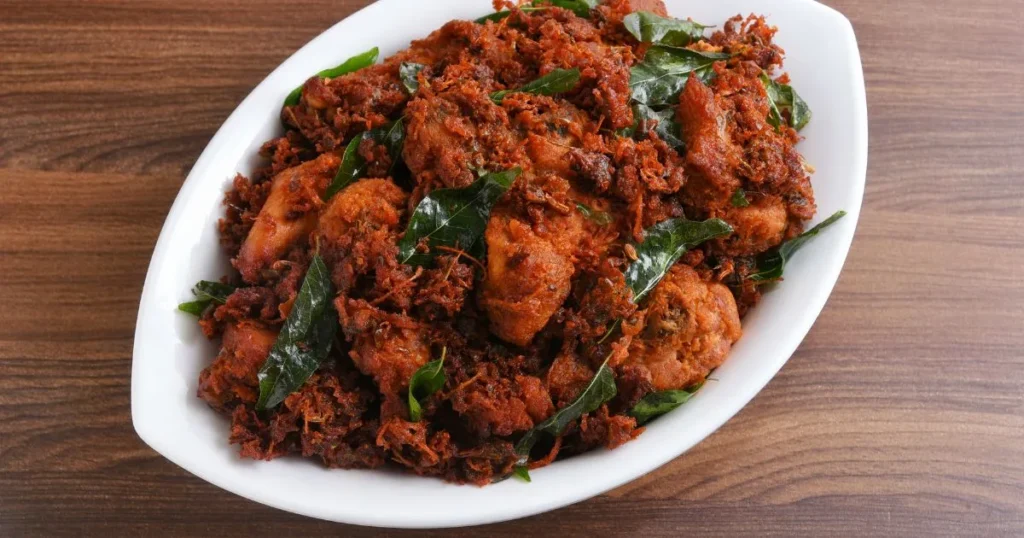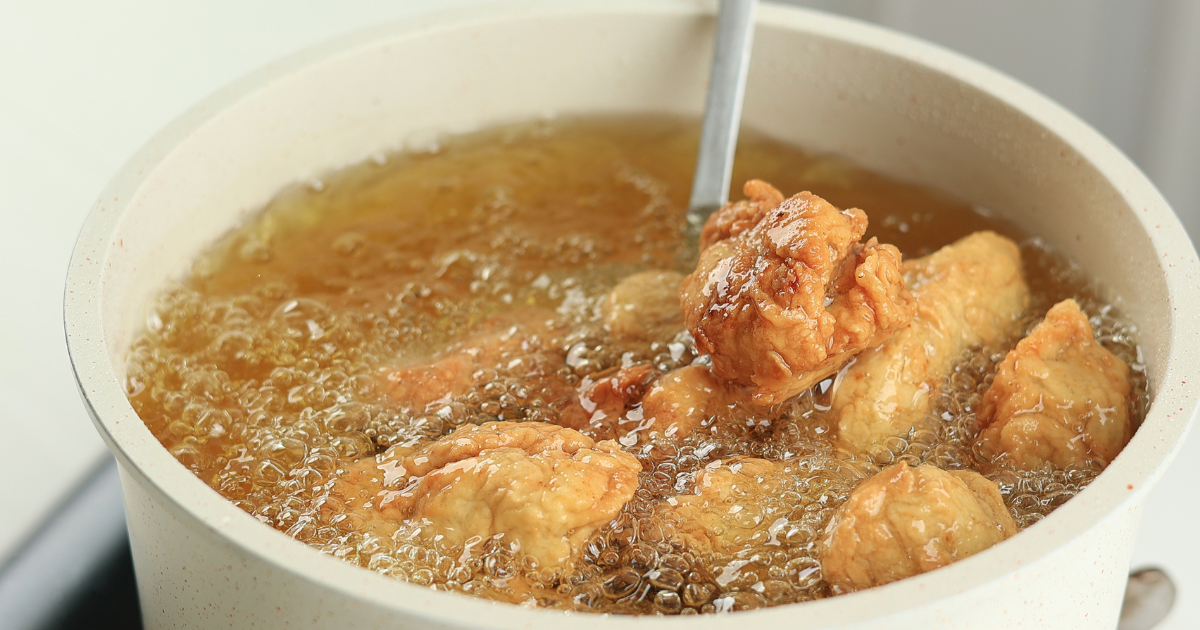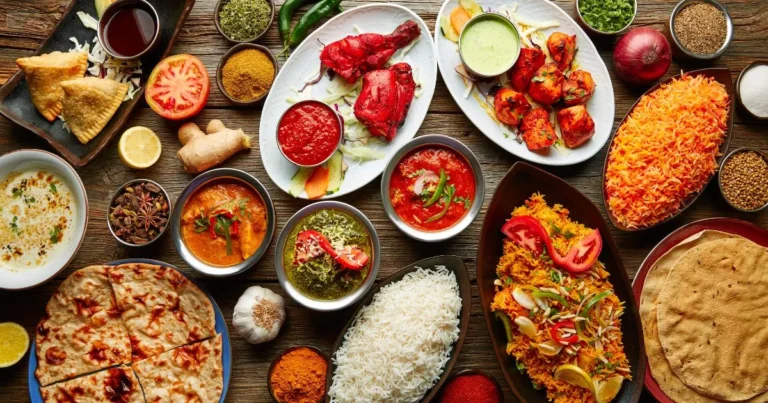5 Powerful Facts About Calories in Chicken Fry You Need to Know

Introduction: Understanding Calories in Chicken Fry
Chicken fry is a beloved dish enjoyed by many across the world. Whether it’s a crunchy deep-fried piece of chicken or a lighter pan-fried version, chicken fry is versatile, flavorful, and perfect for a variety of occasions. However, as with many fried foods, understanding the calorie content is crucial for those who are mindful of their dietary choices. In this article, we’ll dive into the caloric impact of chicken fry, helping you make more informed choices when enjoying this indulgent meal.
Why Tracking Calories in Chicken Fry Matters
When it comes to maintaining a healthy diet, managing calorie intake is essential. While chicken is generally considered a lean protein, the frying process adds significant calories, especially when oil and batter are involved. Tracking the calories in chicken fry can help you understand how it fits into your overall diet, whether you’re aiming to lose weight, maintain your current weight, or simply make better food choices. It also provides insight into how much of the dish can be consumed without exceeding your daily calorie needs.
Being aware of the calories in chicken fry allows you to enjoy this comfort food in moderation while making room for other nutritious meals. Knowing the caloric content can also help you avoid overeating and encourage portion control.
Table of Contents
A Quick Overview of Chicken Fry as a Popular Dish
Chicken fry has become a go-to comfort food for people worldwide. It’s enjoyed in various forms and regional recipes, from the classic Southern fried chicken to spicier, crispy chicken variations in Indian cuisine. Chicken fry is typically prepared by breading pieces of chicken in flour and spices and frying them in oil until golden brown. The dish is flavorful, satisfying, and perfect for both casual meals and celebrations. Despite its delicious appeal, the preparation method – frying – significantly affects its calorie content, which is important to consider for those mindful of their caloric intake.
The Basics: What Affects the Caloric Content of Chicken Fry?
Several factors impact the calorie count in chicken fry. The primary variables include the method of cooking, the ingredients used, and the size of the serving. Below, we break down the key elements that contribute to the caloric content.
The Role of Cooking Method: Deep Frying vs. Pan Frying
The cooking method plays a substantial role in the number of calories packed into each serving of chicken fried. Deep frying, where the chicken is fully submerged in hot oil, generally leads to a higher calorie count compared to pan frying, where less oil is used and the chicken is cooked on a skillet.
- Deep frying: Deep frying causes the chicken to absorb more oil, which adds both fat and calories. Additionally, the batter used in deep-frying absorbs oil during the cooking process, contributing more calories.
- Pan frying: Pan frying uses less oil, which results in fewer calories. However, the calorie count can still be high, especially if the chicken is battered or breaded.
Both methods have their benefits and drawbacks. While deep frying tends to yield a crispier exterior, it significantly increases the calorie content. Pan frying is a somewhat healthier option but still contributes to a substantial calorie intake.
Ingredients that Impact the Calorie Count: Batter, Oil, and Spices
The ingredients used to coat and flavor the chicken also influence its total calorie count.
- Batter: Traditional chicken fry recipes often involve dipping chicken in a flour-based batter. This batter can be rich in calories, especially if it includes eggs, milk, or buttermilk. The thicker the batter, the more calories the dish will contain.
- Oil: The type of oil used also matters. Oils such as vegetable oil, canola oil, or peanut oil are often used for frying, and these oils are calorie-dense. Even if oil is drained after frying, a significant amount of oil can remain on the chicken, adding to its overall calorie content.
- Spices and Seasonings: While spices such as paprika, garlic powder, and black pepper don’t add many calories, some recipes incorporate high-calorie ingredients like sugar, honey, or sauces, which contribute additional calories to the dish.
Calories in Different Serving Sizes of Chicken Fry
When it comes to the calories in chicken fry, portion size is everything. A single piece of fried chicken may seem like a small indulgence, but it’s easy to overlook the calories when serving sizes increase.
Caloric Breakdown for a Single Piece of Chicken Fry
A single piece of fried chicken, typically weighing around 100 to 150 grams, can contain anywhere from 200 to 400 calories, depending on the method of preparation and ingredients used. The calorie count will vary based on whether the chicken is battered, breaded, or plain, as well as the amount of oil it absorbs during frying.
- Skinless vs. skin-on chicken: If the chicken is skin-on, it will generally have more calories due to the added fat in the skin. Skinless chicken will have slightly fewer calories.
Estimating Calories in a Full Meal (with sides)
When estimating calories in a meal that includes chicken fry, it’s important to factor in the sides that accompany it. Common sides include mashed potatoes, coleslaw, fries, and biscuits – all of which add calories. A typical meal with a piece of fried chicken, a serving of mashed potatoes, and a biscuit could range from 700 to 1,200 calories or more, depending on portion sizes.
Nutritional Value of Chicken Fry Beyond Calories
While calories are an important consideration, chicken fry also provides some nutritional benefits that shouldn’t be overlooked.
Protein, Fat, and Carbohydrate Breakdown
- Protein: Chicken is a rich source of protein, which is essential for muscle building, tissue repair, and overall body function. A single serving of chicken fry can provide 15 to 30 grams of protein, depending on the size of the piece.
- Fat: Fried chicken contains a higher fat content than other cooking methods due to the oil used in frying. Depending on the amount of batter and the cooking method, chicken fry can contain anywhere from 10 to 25 grams of fat per serving.
- Carbohydrates: The breading on fried chicken contributes carbohydrates to the dish. A serving can contain anywhere from 10 to 30 grams of carbohydrates, primarily from the flour or bread crumbs used to coat the chicken.
Vitamins and Minerals in Chicken Fry
While not as nutrient-dense as other forms of chicken, fried chicken still provides some vitamins and minerals, including iron, zinc, and B vitamins like niacin and riboflavin. However, the frying process can reduce the vitamin content compared to other cooking methods like baking or grilling.

How to Reduce Calories in Chicken Fry Without Sacrificing Taste
There are ways to enjoy chicken fry while lowering the calorie count, without compromising flavor.
Healthier Cooking Techniques: Grilling or Baking
Instead of frying, consider grilling or baking your chicken for a lower-calorie alternative. These methods reduce the amount of oil used and result in a dish with less fat and fewer calories.
Substituting Ingredients: Low-Calorie Breading and Oils
You can also make healthier substitutions in the ingredients used. Opt for whole-wheat breadcrumbs or almond flour as a lower-calorie breading alternative. Additionally, using healthier oils like olive oil or air-frying the chicken can help reduce the overall calorie content.
Comparison: Calories in Chicken Fry vs. Other Fried Foods
It’s helpful to compare the calories in chicken fry with other common fried foods to put things into perspective.
Chicken Fry vs. Fried Fish
Fried fish, often battered and deep-fried, contains a similar calorie range to chicken fry. However, depending on the type of fish (e.g., cod, haddock), the calorie content can vary, with fish generally containing fewer calories than chicken, particularly if the fish is lean.
Chicken Fry vs. Fried Beef or Pork
Beef and pork, when fried, tend to have higher calorie counts than chicken due to their higher fat content. Fried beef or pork dishes may have 50 to 100 more calories per serving than chicken fry.
Calories in Chicken Fry at Popular Restaurants
Restaurant versions of chicken fry can vary widely in their caloric content, particularly at fast-food chains and sit-down restaurants.
Average Caloric Content at Fast Food Chains
Fast food fried chicken meals, such as those from KFC, Chick-fil-A, or Popeyes, often contain 400 to 600 calories per piece, with meals easily reaching 1,000 to 1,500 calories when including sides and drinks. Always check the nutritional information for accurate counts.
How Calorie Counts Vary Across Different Dining Establishments
Calorie counts for chicken fry can differ depending on the restaurant. Fast food chains typically use oil that is higher in calories and more batter than casual dining establishments or homemade recipes. Higher-end restaurants may use lighter breading and fresher ingredients, which can lower the calorie content.
How Eating Chicken Fry Fits into a Balanced Diet
While fried chicken is undoubtedly delicious, it should be consumed in moderation as part of a balanced diet.
Incorporating Chicken Fry into Your Calorie Budget
You can incorporate chicken fry into your daily calorie budget by being mindful of portion sizes. A single piece of chicken fry can fit into a healthy eating plan if you balance it with nutrient-dense sides like vegetables or salads.
The Importance of Moderation and Portion Control
Moderation is key when enjoying calorie-dense foods like chicken fry. Limiting your portion size and balancing the meal with healthy foods can allow you to enjoy chicken fry without derailing your nutritional goals.
Frequently Asked Questions About Calories in Chicken Fry
Can I Eat Chicken Fry on a Weight Loss Diet?
Yes, chicken fry can be part of a weight loss diet if consumed in moderation. Opt for smaller portions and balance it with lighter sides and plenty of vegetables to keep the overall calorie count in check.
How Does the Cooking Method Affect Calories?
The cooking method, particularly whether the chicken is deep-fried or pan-fried, can have a major impact on its calorie count. Deep frying results in more oil absorption, which adds more calories than pan frying.
Conclusion: Making Informed Choices About Chicken Fry Consumption
Summing Up the Caloric Impact of Chicken Fry
While chicken fry is delicious and satisfying, it’s important to be mindful of its calorie content. The calories in chicken fry are influenced by factors like the cooking method, batter, and portion size, but there are ways to enjoy it more healthfully.
Tips for Enjoying Chicken Fry in a Healthy Way
To enjoy chicken fry without overindulging, consider lighter cooking techniques like grilling or baking, use healthier oils, and opt for smaller portions. Moderation and making informed choices will allow you to enjoy this tasty dish while keeping your calorie intake in check.
Did you try chicken recipes ?
There are no reviews yet. Be the first one to write one.







